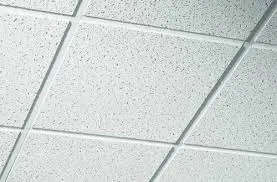- Afrikaans
- Albanian
- Amharic
- Arabic
- Armenian
- Azerbaijani
- Basque
- Belarusian
- Bengali
- Bosnian
- Bulgarian
- Catalan
- Cebuano
- Corsican
- Croatian
- Czech
- Danish
- Dutch
- English
- Esperanto
- Estonian
- French
- German
- Greek
- Hindi
- Indonesian
- irish
- Italian
- Japanese
- Korean
- Lao
- Malay
- Myanmar
- Norwegian
- Norwegian
- Polish
- Portuguese
- Romanian
- Russian
- Serbian
- Spanish
- Swedish
- Thai
- Turkish
- Ukrainian
- Uzbek
- Vietnamese
lis . 03, 2024 11:53 Back to list
difference between gypsum and pvc ceiling
The Differences Between Gypsum and PVC Ceilings
When it comes to selecting false ceilings or interior finishing materials, homeowners and builders often find themselves comparing gypsum and PVC (polyvinyl chloride) ceilings. Both types of ceilings have gained popularity due to their aesthetic appeal, functionality, and ease of installation. However, they possess distinct characteristics that make them suitable for different applications. This article explores the differences between gypsum and PVC ceilings, helping you make an informed choice for your space.
Material Composition
Gypsum ceilings are made from gypsum boards, which are composed of a gypsum core sandwiched between two sheets of heavy paper or fiberglass. This natural mineral-based material is known for its fire resistance and soundproofing properties. In contrast, PVC ceilings are manufactured from synthetic plastic materials. They are designed to be lightweight and water-resistant, making them ideal for areas prone to moisture, such as bathrooms and kitchens.
Aesthetic Versatility
Both gypsum and PVC ceilings come in a variety of designs, colors, and textures. Gypsum ceilings can be painted, textured, or decorated with plaster to create a custom look. They are often used for more elaborate ceiling designs, such as coffered or dropped ceilings, and can contribute to a more elegant and classic interior style. On the other hand, PVC ceilings offer a modern aesthetic with smoother finishes and a wide range of patterns, including wood and metallic looks. They can enhance contemporary interiors while also being easy to clean and maintain.
Installation Process
difference between gypsum and pvc ceiling

Installation methods for gypsum and PVC ceilings differ significantly. Gypsum boards require framing and can be more labor-intensive to install. This process often involves cutting the boards to size, fixing them onto ceiling joists with screws, and applying joint compound to create a seamless appearance. Conversely, PVC ceilings are simpler to install. They typically come in panels or tiles that can be directly clipped or glued to existing ceilings, making them a more straightforward and quicker option.
Maintenance and Durability
In terms of maintenance, gypsum ceilings may require regular repainting or touch-ups, particularly in high-humidity areas where moisture can lead to mold growth. However, they are durable when properly maintained. PVC ceilings, while also durable, are inherently more resistant to moisture and mold. They can be easily wiped clean, making them a lower-maintenance option for homes, especially in humid climates.
Cost Considerations
Cost is another factor to consider when choosing between gypsum and PVC ceilings. Generally, gypsum ceilings are more expensive due to their material and labor costs for installation. In contrast, PVC ceilings tend to be more affordable, providing an attractive solution with lower installation costs. This makes PVC a popular choice for budget-conscious projects.
Conclusion
In summary, the choice between gypsum and PVC ceilings hinges on several factors, including aesthetic preferences, installation ease, maintenance requirements, and budget. Gypsum ceilings may be ideal for those seeking a classic, elegant look with a willingness to invest time and resources, while PVC ceilings present a practical, contemporary solution with lower upkeep. By understanding these differences, you can select the ceiling option that best meets your needs and enhances the beauty of your space.
-
Transform Interiors with PVC Gypsum Ceiling: A Stylish, Durable, and Moisture-Resistant SolutionNewsMay.19,2025
-
The Smart Interior Upgrade: Discover the Durability and Versatility of Gypsum Ceiling Access Panel SolutionsNewsMay.19,2025
-
The Smart Choice for Interior Design: Discover the Value of PVC Gypsum Ceiling SolutionsNewsMay.19,2025
-
Mineral Fiber Ceiling Tiles: The Smart Blend of Performance and AestheticsNewsMay.19,2025
-
Mineral Fiber Ceiling Tiles: The Superior Choice Over Gypsum for Sound and Fire SafetyNewsMay.19,2025
-
Mineral Fiber Ceiling Tiles: Eco-Friendly Strength and Style for Every CeilingNewsMay.19,2025







